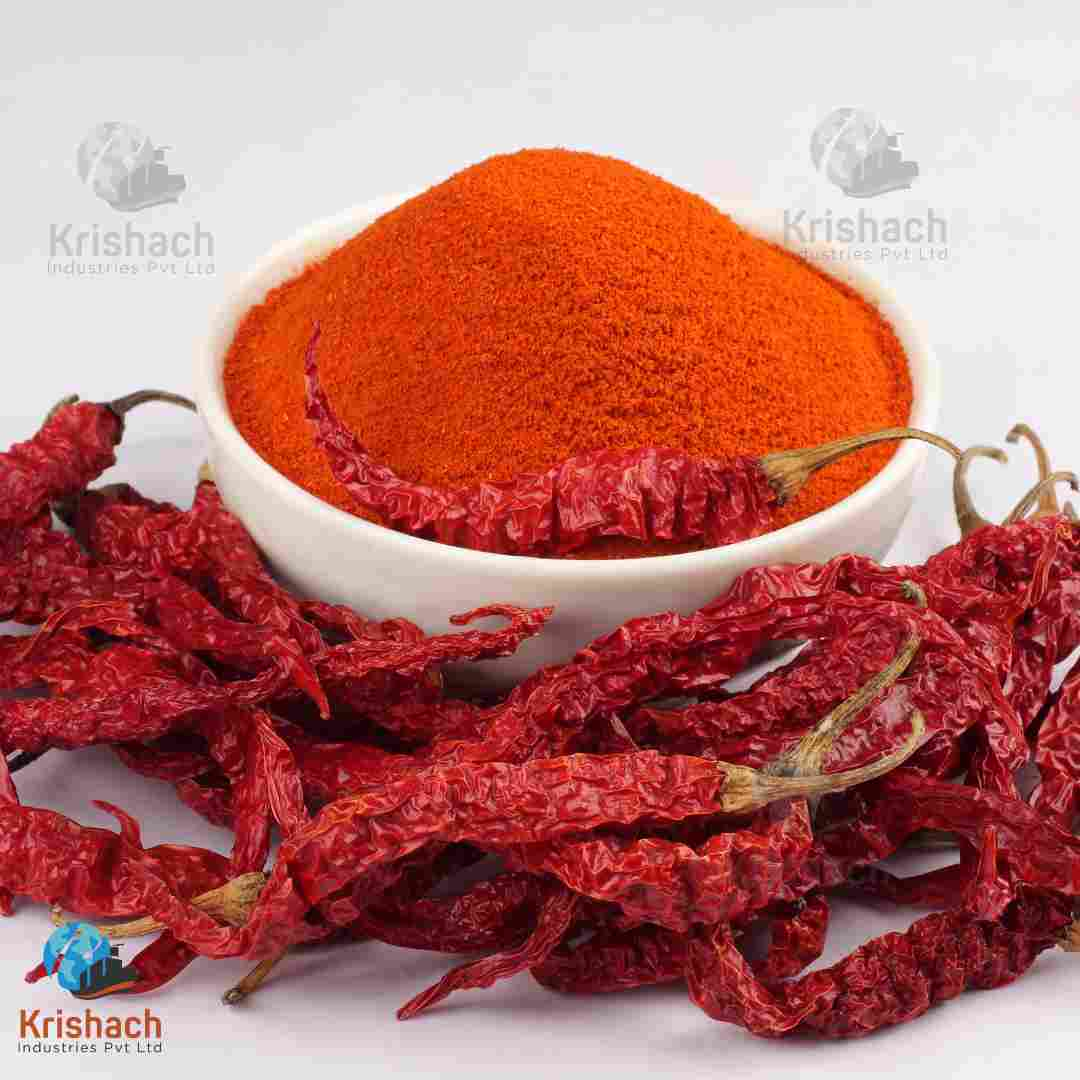Red chili peppers (dried form) are the fruit of various species of the Capsicum plant, known for their spicy, pungent flavor. These chilies are used worldwide in many forms, including fresh, dried, and powdered.
Red Chili Powder:
Form: A finely ground powder made from dried red chili peppers. It can either be made from a single variety of chili or a blend.
Color: Bright red to dark red, depending on the chili used and the drying process.
Texture: Fine powder, with a smooth consistency that disperses easily into dishes.
Aroma: Similar to dried red chilies but more concentrated. It has a sharp, pungent aroma, and the smell is noticeable as soon as it is added to food.
Flavor: Varies depending on the type of chili used. It can range from mildly spicy to very hot. The heat of the powder is usually more uniform and immediate compared to whole chilies. Red chili powder can also have a slight smokiness or earthy undertones, depending on how the chilies were dried.
Specification:
Uses:
Red chili powder is used to add heat and color to a variety of dishes. It is commonly sprinkled into spice blends, curries, marinades, sauces, and rubs for meat or vegetables. It dissolves easily into liquids, making it a quick and effective way to incorporate heat and flavor into a dish.
Benefits:
Red chilly is rich in capsaicin, which may have metabolism-boosting and pain-relieving properties. It is also a good source of vitamins A and C.
Cultivate Seasons for India:
Red chilly is typically cultivated during the kharif season in India, with sowing done in June-July and harvesting in October-November.
Our Services
Reliable Sourcing :
To ensure a consistent supply of high-quality red chilies, establish strong partnerships with local farmers in major chili-producing regions like Andhra Pradesh, Karnataka, Maharashtra, and Tamil Nadu. Focus on sourcing from renowned areas such as Guntur, Byadgi, and Kashmiri, known for their superior chili varieties. Collaborate with farmers who practice sustainable and traditional farming methods to guarantee the chilies are non-GMO and grown without synthetic chemicals.
Premium Quality Assurance:
Implement rigorous quality control measures to ensure that red chilies meet international standards for color, heat, and purity. Secure certifications like ISO, HACCP, FSSAI, and USDA Organic to confirm adherence to global quality and organic standards. Regularly test for contaminants and moisture content, and use moisture-resistant, food-safe packaging to maintain freshness. Ensure full traceability of each batch from farm to final product to uphold quality and transparency.
Process for Chilly Powder:
the process starts with ensuring that the dried chilies are thoroughly dry. The chilies are inspected and cleaned to remove any remaining debris or dust. They are then ground into a consistent powder using industrial mills, and the powder is sifted to ensure uniform particle size. Quality control measures include inspecting the powder for color and flavor, and testing for moisture content and contaminants. Finally, the chili powder is packaged in airtight, moisture-resistant containers to maintain its freshness and quality.
Packaging, Shipping & Delivery
Packaging:
Bags and Pouches:
For Red Chilly Powder, high-quality food-grade materials such as laminated multi-layer pouches (made of materials like PET, PE, BOPP, and Aluminum foil) are used. These bags are moisture-proof and help retain the freshness, flavor, and aroma of the spices. Zip-lock pouches, stand-up pouches, and resealable bags are also popular for smaller quantities and White laballing.
Polypropylene (PP) Woven Bags:
These are the most common types of bags used for packaging large quantities (25 kg and 40 kg) of Red Chilly Powder.They are made of woven polypropylene material, which is strong, lightweight, and durable, providing excellent resistance to tearing and damage during handling and transport.
Laminated Bags:
For additional protection against moisture and humidity, PP woven bags can be laminated with a layer of plastic film. This lamination creates a barrier against moisture, ensuring the spices stay dry and fresh during transportation and storage.
Multi-Wall Paper Bags:
These bags consist of several layers of kraft paper, which provide strength and are often lined with a plastic or polyethylene layer to offer protection against moisture and humidity. They are environmentally friendly and widely used in many markets for exporting food products.
Vacuum-Sealed Packaging:
This type of packaging removes air from the package before sealing, which helps prevent oxidation and moisture build-up, preserving the quality and extending the shelf life of the spices.
Paper or Carton Boxes:
After the packaging, the smaller bags or pouches are placed in corrugated cardboard cartons or paper boxes. These cartons are sturdy, stackable, and protect the contents from physical damage during handling and transportation.
Palletization and Wrapping:
Cartons or sacks are often stacked on wooden or plastic pallets and wrapped with stretch film or shrink wrap. This provides stability, reduces the risk of damage during transport, and makes handling more efficient.
Export Documentation:
Handle all necessary export documentation, including phytosanitary certificates, certificates of origin, and any specific certifications required by the importing country.
Efficient Shipping:
Partner with reliable freight forwarders and logistics companies to ensure timely and safe delivery of goods. Offer multiple shipping options (air, sea, or land) based on customer preferences.
























